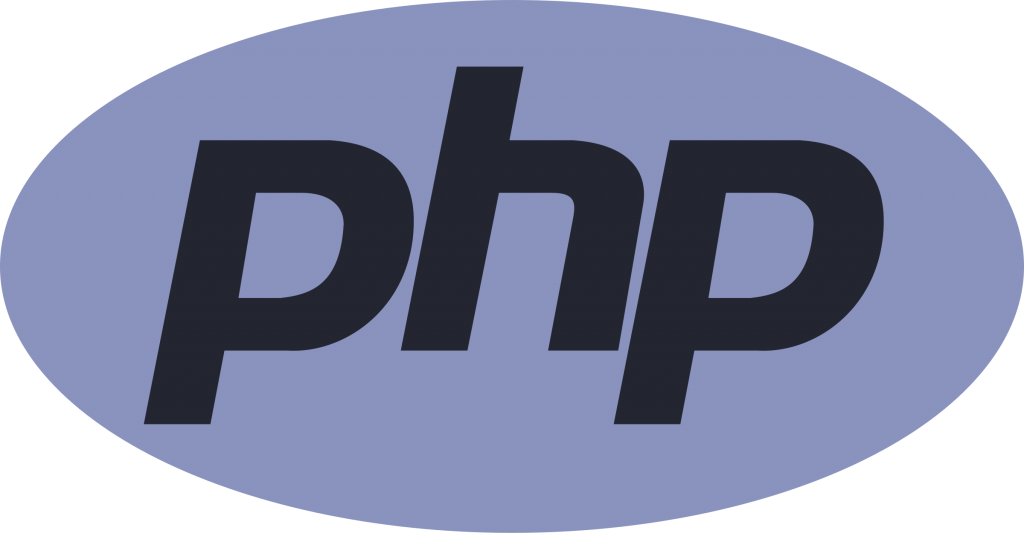Reading time: 9 minutes.

Introduction to Web Development Frameworks
The Role of Frameworks in Web Development
Frameworks play an essential role in the realm of web development. They provide a structured environment that standardizes the way developers build and maintain websites and applications. By offering reusable code components, frameworks streamline the development process, allowing developers to focus on unique features rather than reinventing the wheel.
A framework serves as a foundation upon which a developer can build. They incorporate libraries, tools, and best practices that facilitate the entire development cycle—from design and coding to testing and deployment.
There are numerous types of frameworks available, each tailored to different aspects of web development. Some focus on the frontend, some on the backend, while others cover full-stack development. Understanding the role of these frameworks is crucial, especially for those aiming to excel in front end web development, full stack development, or specialized areas.
Benefits of Using Web Development Frameworks
Using web development frameworks brings several notable benefits. These advantages make frameworks an indispensable tool for both novice and seasoned developers.
Here’s a closer look:
| Benefit | Description |
|---|---|
| Efficiency | Frameworks expedite the development process by providing pre-built components and templates. This reduces the time and effort required to build applications from scratch. |
| Consistency | Frameworks enforce consistent coding practices, ensuring that all parts of a project adhere to the same standards. This cohesiveness is particularly valuable in team environments. |
| Security | Most frameworks come with built-in security features that address common vulnerabilities. This enhances the overall security of the application without requiring extensive manual intervention. |
| Scalability | By separating different concerns and offering modular components, frameworks make it easier to scale applications as they grow in size and complexity. |
| Maintenance | Frameworks simplify the maintenance process by organizing code in a logical and readable manner. This makes it easier to troubleshoot issues and implement updates. |
| Community Support | Popular frameworks often have extensive communities behind them. This means access to a wealth of resources, documentation, and peer support. For more on community support, visit our section on Exploring Framework Ecosystem. |
Utilizing frameworks aligns with current industry demands and trends in web development. For those looking to elevate their careers, gaining proficiency in frameworks can be a valuable addition to a developer’s skill set. Recognized frameworks can also bolster your qualifications when pursuing certifications or web development certifications.
By leveraging the full potential of web development frameworks, developers can create more robust, scalable, and efficient web applications, setting a strong foundation for future projects and innovations in the field.
Frontend Frameworks
Overview of Frontend Frameworks
Frontend frameworks are essential tools for web developers, providing the structure and components necessary to build dynamic and efficient user interfaces. They help streamline the development process, allowing developers to focus more on functionality and user experience rather than starting from scratch. By using frontend frameworks, I can ensure consistency, modularity, and reusability in my projects, enhancing both productivity and code quality.
Popular Frontend Frameworks:
When it comes to frontend frameworks, several have gained popularity due to their robust features and community support. Here are a few that are widely used in the industry:
Angular
Angular is a powerful framework developed by Google. It excels in building single-page applications using a component-based architecture. Its two-way data binding and dependency injection features make it a preferred choice for many developers. Angular’s comprehensive documentation and large community support ensure help is always available.
| Feature | Details |
|---|---|
| Developed By | |
| Architecture | Component-based |
| Key Feature | Two-way data binding |
| Community Support | Extensive |
React
React, developed by Facebook, is another frontrunner in the world of frontend development. It is technically a library but often categorized as a framework due to its capabilities. React focuses on building reusable UI components, making it easier to manage complex user interfaces. The virtual DOM implementation provides a significant performance boost.
| Feature | Details |
|---|---|
| Developed By | |
| Architecture | Component-based |
| Key Feature | Virtual DOM |
| Community Support | Large |
Vue
Vue is a progressive JavaScript framework that has quickly gained traction among developers. It is designed to be incrementally adoptable, meaning I can use as much or as little of the framework as needed. Vue’s simplicity and flexibility make it an excellent choice for both small and large projects.
| Feature | Details |
|---|---|
| Developed By | Evan You |
| Architecture | Component-based |
| Key Feature | Reactivity system |
| Community Support | Growing |
To explore more about developing the frontend, check our dedicated article on front end web development.
By understanding the strengths and functionalities of these popular frameworks, I can make informed decisions about which tool would best suit my specific web development project needs. For additional resources and to further enhance your skills, consider looking into web development bootcamp or web development certifications.
Backend Frameworks
Backend frameworks play a crucial role in web development by providing the server-side logic that powers web applications. These frameworks help developers build robust and scalable applications by offering pre-built modules and tools to handle various backend tasks efficiently.
Overview of Backend Frameworks
Backend frameworks streamline the development process by managing server-side architecture, database integration, and application logic. They facilitate tasks such as URL routing, user authentication, data modeling, and more. By using these frameworks, developers can focus more on the core functionality of the application rather than reinventing the wheel for common backend tasks.
Popular Backend Frameworks:
There are numerous backend frameworks available, each with its own set of features and benefits. Here are some popular ones:
| Framework | Programming Language | Key Features |
|---|---|---|
| Framework A | Language X | High performance, easy scalability |
| Framework B | Language Y | Extensive libraries, strong community support |
| Framework C | Language Z | Flexibility, rich set of microservices |
- Framework A
- Built with Language X.
- Known for its high performance and easy scalability.
- Ideal for building large-scale web applications.
- Framework B
- Written in Language Y.
- Offers extensive libraries and has strong community support.
- Suitable for projects requiring robust security and data handling.
- Framework C
- Developed using Language Z.
- Appreciated for its flexibility and rich set of microservices.
- Perfect for creating modular and maintainable web applications.
Backend frameworks are an essential part of the web development ecosystem. They help developers create powerful server-side applications that are both efficient and scalable. By understanding the strengths of various backend frameworks, developers can choose the right tool for their specific project needs. For more insights into web development, consider exploring our articles on front end web development and full stack web development.
Full-Stack Frameworks
Understanding Full-Stack Frameworks
Full-stack frameworks provide the tools necessary to handle both front-end and back-end development, allowing me to build a complete web application from scratch. These frameworks encompass everything I need to manage databases, serve web pages, and handle logic, making them comprehensive solutions for web development.
Full-stack frameworks are vital for developers who want to handle both the client-side and server-side aspects of their projects. They streamline the development process by offering a cohesive environment, reducing the need for separate front-end and back-end frameworks. This holistic approach can lead to more efficient and maintainable codebases, aiding in the overall productivity and quality of the web application.
Popular Full-Stack Frameworks:
When it comes to full-stack development, several frameworks stand out due to their robustness and popularity among developers. Here are some of the most widely used full-stack frameworks:
| Framework | Primary Language | Key Features |
|---|---|---|
| Framework A | JavaScript | Unified client-server development, powerful libraries |
| Framework B | Python | Simple syntax, extensive community support |
| Framework C | Ruby | Convention over configuration, built-in data handling |
| Framework D | PHP | Open-source, easy integration with various databases |
It’s essential to choose a framework that aligns with my development goals and project requirements. Whether I am focused on full stack web development or exploring specialized areas like responsive web development, understanding the capabilities of these frameworks can significantly impact my workflow.
For those new to full-stack frameworks, participating in a web development bootcamp or earning web development certifications can provide structured learning paths and hands-on experience, making it easier to master these powerful tools.
By gaining proficiency in full-stack frameworks, I can leverage the power of both front-end and back-end technologies to craft exceptional web applications, cater to clients’ needs, and excel in the ever-evolving field of web development.
Choosing the Right Framework
Selecting the appropriate framework for a project can significantly impact the efficiency and quality of web development. It is essential to carefully consider various elements before committing to a framework.
Considerations When Selecting a Framework
When deciding on a framework, multiple factors come into play. Here are some key considerations:
- Project Requirements
- Determine the scope and complexity of the project.
- Assess the specific needs, such as frontend, backend, or full-stack requirements.
- Learning Curve
- Evaluate the time it will take to learn and become proficient in the framework.
- Consider available learning resources and community support.
- Community and Ecosystem
- Prefer frameworks with a strong user base and community support.
- Look for active forums, web development bootcamps, and documentation.
- Performance and Scalability
- Analyze the framework’s ability to handle high traffic and scaling.
- Check performance benchmarks and real-world case studies if available.
- Compatibility
- Ensure the framework is compatible with other web development tools and technologies.
- Consider integration with third-party services and APIs.
Factors to Evaluate in a Framework
To make an informed decision, it’s crucial to evaluate specific aspects of the framework. Here are some factors to consider:
| Factor | Description |
|---|---|
| Ease of Use | How easy is it to set up and use the framework? Are there clear tutorials and documentation available? |
| Flexibility | Does the framework allow for customization and flexibility to meet project-specific needs? |
| Security | Evaluate the built-in security features and the framework’s track record for handling vulnerabilities. |
| Maintenance | Assess the frequency of updates and the long-term support provided by the framework’s maintainers. |
| Cost | Consider any licensing fees, if applicable, and the overall cost of using the framework, including development and maintenance. |
By carefully considering these factors, developers can make an informed choice that aligns with their project needs and personal preferences. For further exploration into the framework ecosystem, check out additional resources on web development services and full stack web development.
Exploring Framework Ecosystem
Understanding the ecosystem surrounding web development frameworks is crucial for any web developer. This section delves into three pivotal aspects: community support, learning resources, and future trends in web development frameworks.
Community Support
Community support plays a significant role in the success and usability of web development frameworks. A robust community can provide the needed guidance, solve issues, and share best practices. Below is a table depicting the size of communities for some popular frameworks based on GitHub stars and Stack Overflow questions.
| Framework | GitHub Stars | Stack Overflow Questions |
|---|---|---|
| Framework A | 50,000 | 15,000 |
| Framework B | 80,000 | 25,000 |
| Framework C | 30,000 | 10,000 |
Access to a large and active community can significantly reduce the time needed to troubleshoot problems and learn new techniques. For more on the value of community, visit web development bootcamp.
Learning Resources
The availability of learning resources is another essential factor when choosing a web development framework. These resources include documentation, tutorials, courses, and forums. Comprehensive documentation and a wealth of tutorials make it easier to learn and master a framework.
- Documentation: The quality and comprehensiveness of official documentation.
- Tutorials: Availability of step-by-step guides and practical projects.
- Courses: Online platforms offering courses, often with certifications (see web development certifications).
- Forums and Q&A Sites: Platforms like Stack Overflow where developers can ask questions and get answers.
Exploring these resources can help in gaining expertise and applying the framework effectively in real-world scenarios. Check out our guide on web development tools for additional resources.
Future Trends in Web Development Frameworks
Keeping an eye on future trends is essential for staying ahead in the web development field. Some emerging trends in web development frameworks include:
- Increased Focus on Performance: Frameworks are evolving to deliver faster load times and better performance.
- Enhanced Security Features: Incorporating advanced security measures to protect against cyber threats.
- Integration with Modern Technologies: Seamless integration with AI, machine learning, and blockchain technologies.
- Improved Developer Experience: User-friendly interfaces and streamlined processes to enhance productivity.
Understanding these trends can help in making informed decisions and adopting frameworks that will stay relevant in the long run. For more insights on the future of web development, visit full stack web development.
By exploring the ecosystem surrounding web development frameworks, developers can make well-informed choices, enhance their skillset, and stay updated with industry trends.





